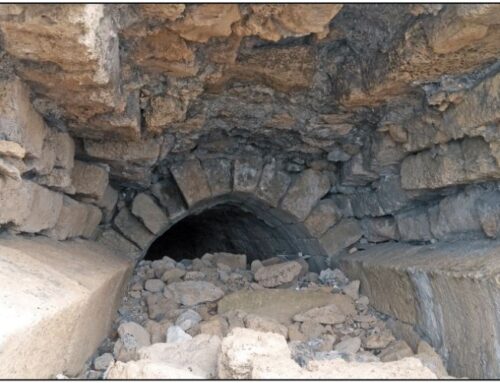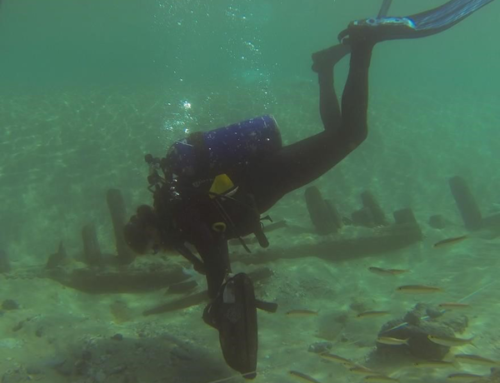The South Bay of Tel Dor – 2016-2018
Assaf Yasur-Landau
From the Middle Bronze Age on, Dor, located on the south Levantine coast, was a vital commercial port. It is currently one of the most important sites for understanding the beginning of Phoenician civilization. It is also a key site for the diachronic study of maritime networks and for research on coastal and maritime structures related to maritime activity in the Iron Age and possibly earlier.
Work carried out in 2016-2018, aimed at examining the methodology of a joint land and sea strategy, led to unexpected results regarding the understanding of known coastal and underwater structures and discovered new underwater structures and features.
The team from the University of Haifa were able to conduct stratigraphical excavations underwater, acquiring datable archaeological material with clear connections to architectural underwater features at the north of the bay: massive Iron 1b-2 wall (11th-10th centuries BCE); an earlier wall (Iron 1a or Late Bronze Age); an artificial “reef” made of ashlar blocks a possible mole of undetermined date; and deposits of clay with ceramics dating to the Middle Bronze Age (ca. 20th—16th centuries BCE) and to the late Neolithic or Chalcolithic periods (6th-5th millennia BCE). The massive parallel ashlar walls, now semi-submerged, were previously thought to be quays, however, our recent excavations have now demonstrated that these may be the foundations of a massive coastal fortification, a part of an ambitious Iron Age building program executed in the interface between the site and the sea. Later, perhaps still in the Iron Age, a stone mole was added to facilitate docking. With the rising sea levels this mole was covered by natural encrustation, and was previously thought to be a natural reef.
Work was also carried out in the central and southern part of the bay, a large feature was discovered and consists of three large walls which may also be a quay or mole. It was documented by underwater surveys and further work is planned here in 2019 to find out more about its function and date. A second feature in the center of the bay was also excavated and contains one of the largest ashlars found at Tel Dor as well as several hewn stones and is thought to be an area for anchoring.





